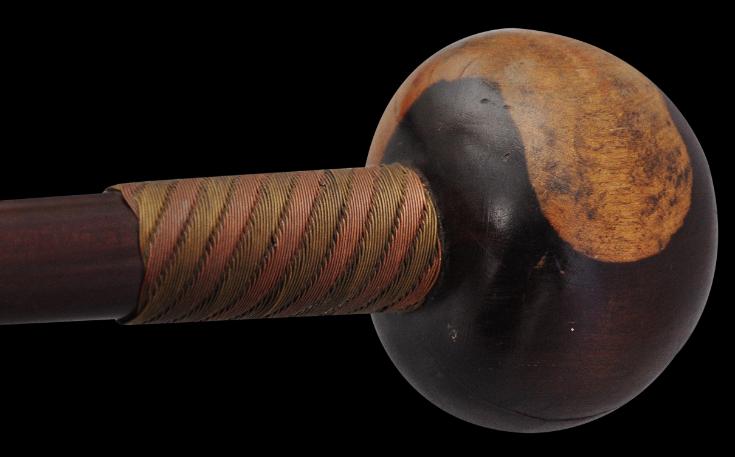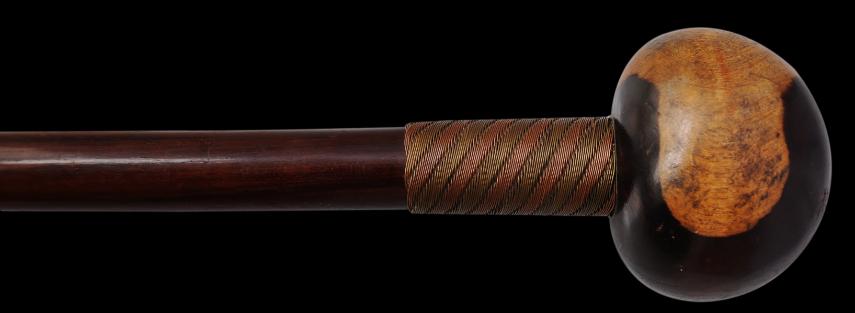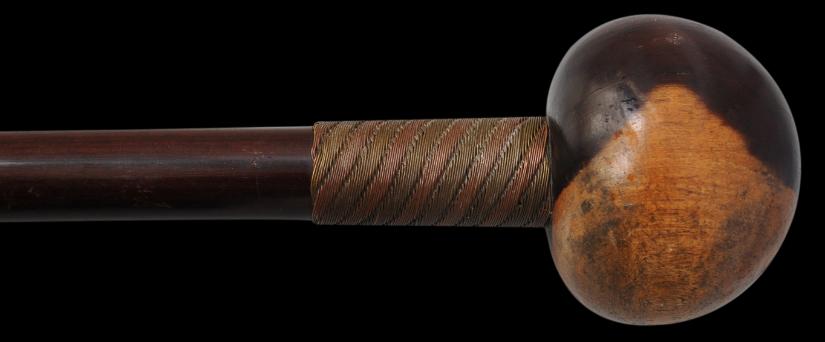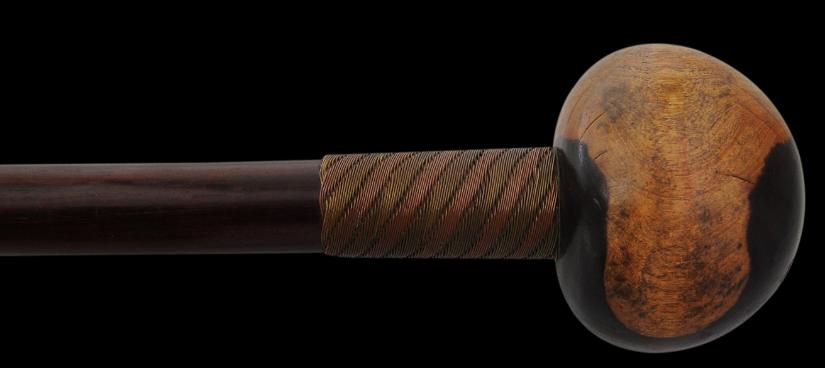Zulu Knobkerrie Club
Knobkierrie Club
Zulu, South Africa
before 1902
length: 70cm
This fine Zulu club or knobkierrie is of dark hardwood, but with a pleasing two-toned, solid spherical head. The shaft is embellished with three segments of finely plaited copper and brass wire, all of which is intact. It has a fine patina and clear age, having come directly from Scotland’s Blair Castle, the ancestral home of the Lairds of Blair.
Traditionally, a Zulu man always carried a knobkierrie. Clubs such as these were used for throwing at animals in hunting or for clubbing an enemy’s head in war.
The name ‘knobkierrie’ derives from the Afrikaans word ‘knop’, meaning ball or knot and the word ‘kierrie’, meaning cane or walking stick.
Not only Zulu people used knoberries as weapons of battle but also the Nguni and Xhosa people.
A knobkierrie with wire work showing a similar pattern is illustrated in Phillips (2004, p.210)
Blair Castle, from where this knobkierrie has come, reputedly is the oldest continually inhabited mansion in Scotland. The Blair family traces its ancestry back to the reign of William the Conqueror. It was at this time that the Barony of Blair was awarded to a Norman knight Jean Francois, who became the first Laird of Blair – a Laird being a title specific to Scotland and being granted to the owner of a substantial and distinctive landed estate. A Laird ranks below a Baron and above an Esquire in the non-peerage table of precedence.
Fredrick Gordon Blair, the 26th Laird (1852-1943), commanded the 4th Battaleon of the Imperial Yeomanry in the Second Anglo-Boer War (1899-1902). This knobkierrie is believed to have come into the possession of the Lairds of Blair at that time.
References
Phillips, T. (ed.), Africa: The Art of a Continent, Prestel, 2004.
Provenance
The Lairds of Blair, Blair Castle, Scotland.
Inventory no.: 1713
SOLD
to see another knobkierrie.






